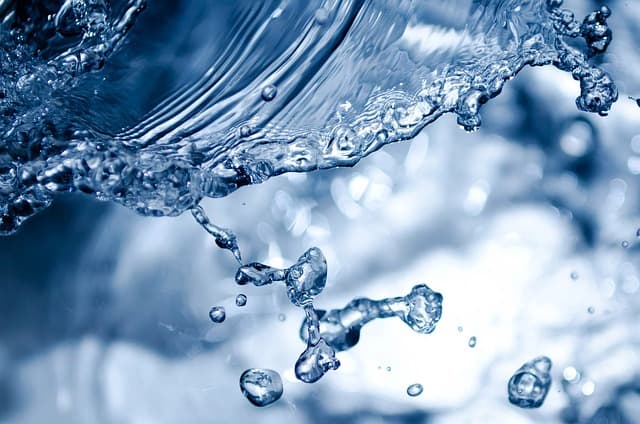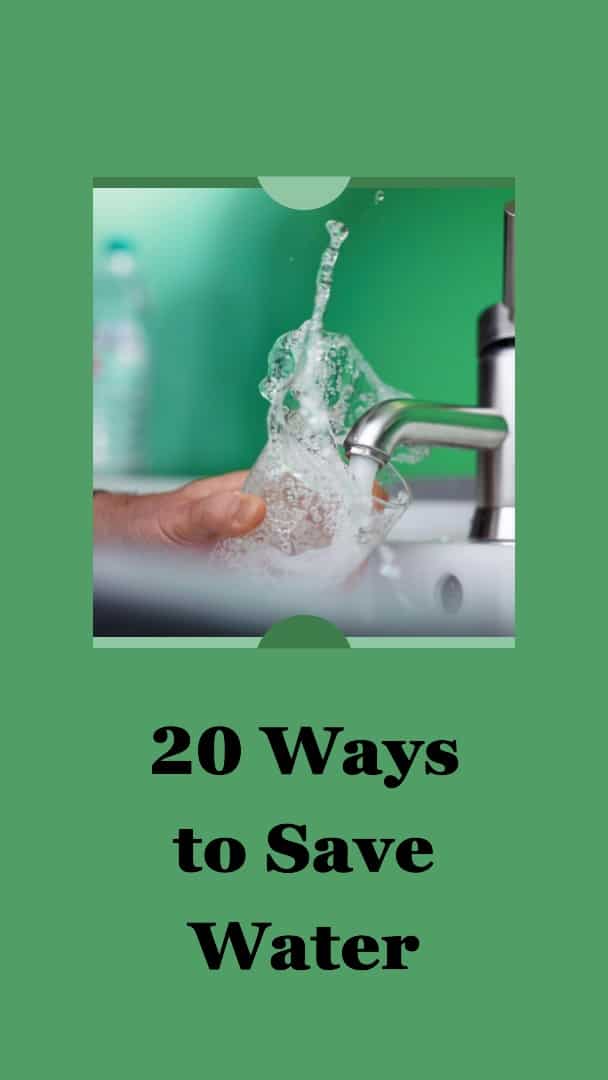Water, the lifeblood of our planet, is a critical resource we often take for granted.
The main benefits of sustainable water management in communities include environmental preservation, economic efficiency, and enhanced health and well-being.
Delve into the following passages to discover how this vital practice can transform your community, offering a brighter, more sustainable future for generations to come. Your journey into understanding and embracing sustainable water management starts now. Don’t miss out!
Benefits of Sustainable Water Management in Communities

Environmental Preservation
Sustainable water management practices play a significant role in protecting and preserving our environment. When a community employs these strategies, they contribute to the reduction of water pollution and the conservation of aquatic habitats.
Reduction of Water Pollution
Through strategies like rainwater harvesting and wastewater recycling, communities can significantly decrease the amount of polluted water that reaches our rivers and oceans. Every drop of water that is recycled or captured before it carries pollutants into our waterways means a cleaner and healthier environment for all.
Conservation of Aquatic Habitats
Over-extraction of water for human use can lead to the destruction of aquatic habitats. By managing our water use sustainably, we ensure that there’s enough water left for the plants and animals that depend on these habitats for survival.
Combatting Climate Change
Sustainable water management practices can also help communities combat climate change. Efficient water use reduces the energy needed for water treatment and distribution, thereby lowering greenhouse gas emissions. In addition, certain water management strategies like wetland restoration can help sequester carbon, further mitigating climate change.
Economic Efficiency
Sustainable water management is not just about being kind to Mother Nature. It also makes a lot of cents (pun intended!). By adopting these practices, communities can save money in several ways.
Reduced Water Bills
The use of rainwater harvesting systems, greywater recycling, and efficient irrigation systems can significantly reduce the amount of water a community needs from the municipal supply, leading to substantial savings on water bills.
Lower Infrastructure Costs
Communities that manage water sustainably often have lower infrastructure costs. Rain gardens and permeable pavements reduce the strain on stormwater systems, while decentralized wastewater treatment can be less expensive to implement and maintain than traditional sewer systems.
Job Creation
Sustainable water management can also stimulate economic growth by creating jobs. From constructing and maintaining green infrastructure to implementing and managing water conservation programs, there are numerous opportunities for employment in this field.
Health and Well-being
Sustainable water management can also have direct benefits on the health and well-being of community members.
Clean, safe water is vital for human health, and proper wastewater management can reduce the risk of waterborne diseases.
Improved Public Health
Sustainable water management can have direct benefits on public health.
Clean, safe water is vital for human health, and proper wastewater management can reduce the risk of waterborne diseases.
Enhanced Quality of Life
Beyond physical health, sustainable water management can also enhance the overall quality of life in communities.
Green spaces that manage stormwater, for example, also provide recreational opportunities and improve air quality.
Meanwhile, reduced flooding from better water management can give residents peace of mind.
Resilience to Water Scarcity
By making the most efficient use of available water resources and planning for future changes, communities can become more resilient to potential water scarcity, protecting themselves against drought and other water-related crises.
Implementation Strategies for Sustainable Water Management

Knowing the benefits of sustainable water management in communities is one thing, but how do we implement these practices effectively?
Here are some tried and true strategies.
Rainwater Harvesting
Rainwater harvesting is a simple yet effective method of sustainable water management.
It involves collecting rainwater from roofs and other surfaces, storing it, and using it for non-potable uses like irrigation, flushing toilets, and even laundry.
Creating Rainwater Harvesting Systems
A rainwater harvesting system generally consists of a catchment area (like a roof), a conveyance system (like gutters and downspouts), a storage tank, and a distribution system.
Community members can collaborate to build these systems or seek professional installation.
Optimizing Rainwater Use
Rainwater collected can be used for a variety of non-drinking purposes, including irrigation, washing clothes, and flushing toilets.
This not only conserves valuable drinking water but also reduces water bills.
Greywater Recycling
Greywater is wastewater from sources like showers, sinks, and washing machines.
By treating and reusing this water for tasks like garden irrigation or flushing toilets, communities can significantly reduce their reliance on freshwater supplies.
Establishing Greywater Treatment Systems
Setting up a greywater treatment system involves collecting the wastewater, treating it to a safe level, and then reusing it.
Professional consultation may be required to ensure the safety and efficacy of the system.
Promoting Greywater Use
Educating community members about the benefits and safety of using treated greywater can help promote its use.
This education can be accomplished through workshops, brochures, or community meetings.
Efficient Irrigation Techniques
For communities involved in agriculture, efficient irrigation techniques are a must.
Drip irrigation, for instance, delivers water directly to the roots of plants, reducing evaporation and runoff.
Adopting Drip Irrigation
Transitioning to drip irrigation may require some upfront investment but can result in substantial water savings. Assistance from agricultural extension services or nonprofits can be valuable in making this switch.
Implementing Sprinkler Irrigation
Another efficient irrigation method is sprinkler irrigation, which can be more efficient than traditional flood irrigation.
Again, seeking professional guidance can ensure that these systems are installed and operated correctly for maximum efficiency.
Sustainable Landscaping
Sustainable landscaping involves choosing plants and landscape designs that require minimal water.
This strategy can be highly effective in reducing a community’s overall water demand.
Encouraging Xeriscaping
Xeriscaping involves landscaping with drought-tolerant plants, reducing or eliminating the need for irrigation.
Community education programs can promote this approach.
Promoting Rain Gardens
Rain gardens are designed to capture and absorb rainwater, reducing runoff and promoting groundwater recharge.
They can be a beautiful and effective part of a community’s sustainable water management strategy.
Community Participation in Sustainable Water Management

For sustainable water management strategies to be successful, community participation is key.
Residents need to be engaged and informed about the importance of these practices and how they can contribute.
Some ideas on how to make community participation work in the best possible way could be the following:
Building Awareness and Education
For any community project to succeed, building awareness and educating the community is paramount.
Organize Informational Meetings
Hosting regular informational meetings where experts can explain the importance of sustainable water management and the steps the community can take is a great starting point.
These meetings can be advertised on community bulletin boards, social media, and through word-of-mouth.
Distribute Educational Materials
Creating and distributing educational materials such as brochures, flyers, and posters can help get the message across.
These can be distributed in public areas like community centers, schools, and libraries.
Encouraging Active Participation
Getting people involved is key to sustaining a community-driven initiative.
Form a Water Committee
Establish a community water committee that oversees water management activities.
This committee can organize events, monitor progress, and serve as a point of contact for any queries or concerns.
Implement Community-led Projects
Start with small, tangible projects such as a community garden using rainwater harvesting or a neighborhood cleanup of a local water body.
This can give participants a sense of achievement and encourage further participation.
Involving Youth
Youth can be powerful agents of change, and their involvement can help ensure the longevity of sustainable water management practices.
Integrate into School Curriculum
Work with local schools to integrate sustainable water management into the curriculum.
Hands-on projects related to water can be both educational and fun for students.
Start a Youth Club
Starting a youth club dedicated to water conservation can also be an effective way to involve young people.
This club can organize activities such as tree planting, water testing, and educational campaigns.
Partnering with Local Government and Nonprofits
Collaborating with local government and nonprofit organizations can provide additional resources and expertise.
Seek Government Support
Local governments often have resources available for community projects.
They may be able to provide funding, technical advice, or promotional support for sustainable water management initiatives.
Collaborate with Nonprofits
Nonprofit organizations often have extensive experience in implementing community projects.
They may be able to provide training, funding, or other support to enhance your community’s sustainable water management efforts.
How Can I Contribute to Sustainable Water Management in My Community?
Every drop counts when it comes to water conservation, and your contributions can make a difference.
You can aid sustainable water management in your community by practicing efficient water use at home, harvesting rainwater, recycling greywater, and advocating for water-efficient policies and practices.
Remember, every action, no matter how small, contributes to a more sustainable and water-secure future. Start today and become a beacon of change in your community!
Key Takeaways

As we navigate the uncharted waters of the 21st century, sustainable water management is no longer an option, but a necessity.
The benefits of sustainable water management in communities are clear, from preserving the environment and saving money to promoting health and well-being.
It’s high time we all played our part in this crucial endeavor. Because, after all, water is life.
Sources
- United Nations – Water
- American Water Works Association
- The Water Project
- The US Environmental Protection Agency (EPA) – Water Sense
- Pacific Institute
I’m Thomas, the owner of SustainableWave. Passionately promoting a sustainable planet. With experience in various eco-roles, I’ll share green tips, sustainability hacks, and personal eco-journeys on my blog.






